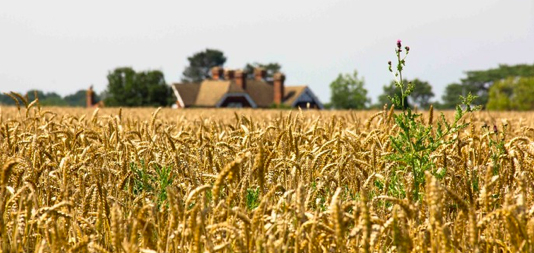
Aagh, the bucket list! Is it a good thing or is it a bad thing? Some runners get so obsessed at ticking the races off and working through a list that they actually forget the most important thing; the experience.
I would much prefer to run for a lifetime with targets, goals and a ‘to do’ list than get it all over and done within five years and maybe not be able to run again through an injury.

So, to that end ‘findarace’ asked me what I considered to be the five best ultras in the UK. Now of course I am potentially opening a can of worms here. What one runner likes, another doesn’t. So, instead of trying to second-guess and be politically correct I am going to list five that I would choose.
To clarify, it’s all about experiences, views and challenges for me, so, you are not going to see a road ultra in this list as I don’t think we have anything in the UK that could compete with Comrades. Had London to Brighton still been a road run, it would have almost certainly made the list. Also, your not going to see the GUCR (Grand Union Canal Race) at the risk of some abuse from those who ‘love’ this race I just personally think life is too short to run for hours and hours on a canal tow path. Also, distance isn’t everything. I am not a distance snob and therefore for me, a good race is a good race, 30 miles, 50 miles or 100(+) miles makes no difference.
Here goes in chronological order:
January – The SPINE 268-mile non-stop across the Pennine Way HERE

Having said that distance isn’t everything and then here I go with a ridiculous 268-mile race that takes place in January. yes, January. So, if distance wasn’t enough you have to contend with cold weather, ice, snow, wind and whatever else the UK can throw at you. The appeal? Well this race is non-stop so it brings in a real element of tactics, endurance, planning and basically leave your brain at the door challenge.
Taking place on the entire Pennine Way it is arguably the most demanding National Trail in Britain. Beautiful, difficult and challenging it includes the Peak District, Cheviots, Yorkshire Dales and Northumberland National Park – finishing on the Scottish Borders.
Open to anyone with appropriate experience who wishes to test themselves and compete in a truly brutal race. The first edition was in 2012 and only 3 finished.
April – HIGHLAND FLING 53 miles HERE

The Highland Fling Ultra, is a trail race over the southern section of the famous West Highland Way Path (you can cover the full 95 miles in August in the West Highland Way race) Starting in Milngavie (close to Glasgow) and finishing in the scenic village of Tyndrum. The route is almost entirely on trails and thus traffic-free. Varied terrain and stunning scenery makes this a truly enjoyable experience.
In addition to the solo runners, there are club competitions, and a four-person relay race. All runners must be 21 years old or over (18 for the relay). 53 miles you must cover the distance within the 15-hour time limit and you must run unsupported, however, you are allowed drop bags at checkpoints.
June – UTSW 100 miles, 60 miles and 100m relays HERE

The UTSW is a brute… offering two distances at 60 and 100 miles believe me you are no wimp choosing the 60-mile option. The 100-mile race starts in Charlestown in the southwest corner of Cornwall. Heading east on the South West Coast Path crossing the beautiful Fowey estuary by ferry before continuing on to the to the quaint fishing town of Looe. Here you will leave the South West Coast Path for a while and head inland mostly following the Smugglers Way. Continuing north you will come to the famous Jamaica Inn. Bodmin Moor is the next obstacle.
If you plan on the 60-mile option, Bodmin is your start point. Brown Willy the highest point in Cornwall is the next landmark and then you have a cross county trek which comes to an end at Boscastle. Here you head west along the South West Coast Path to Tintage. Now heading west you will hit the Camel Estuary where a ferry will transport you across to Padstow. Padstow to Watergate Bay are the final 20 miles with a finish at the Watergate Bay Hotel. Don’t underestimate this race! This course is brutal, beautiful and challenging.
July – Lakeland 100 and 50 HERE

For me, the Lakeland 100 and 50 is everything that an ultra should be. A challenging course, beautiful course, great organization and an iconic race. In it’s short history the race has become possibly the premier 100 miler in the UK. Taking in a circular route of the English Lakes the race starts and finishes in Coniston. It is a navigation event but you are provided with a detailed route book and you are allowed GPS. For many participants, regular ‘recces’ are essential to ensure that race day runs smoothly. The 50-mile option starts half way around the 100-mile route and is a wonderful race it it’s own right. In actual fact, I would almost tip my head towards the ‘50’ as it can be raced and ultimately a more enjoyable experience may be obtained. It depends what you are after?
The route encompasses the whole of the Lakeland fells, it includes in the region of 6300m of ascent. The route is almost entirely on public bridleways and footpaths but does have one or two small sections of road to make connections with trail. The route takes in the Dunnerdale fells, Eskdale, Wasdale and Buttermere before arriving in Keswick. From here the route heads to Matterdale and continues over to Haweswater before returning via Kentmere, Ambleside and Elterwater to the finish at Coniston.
August – North Downs Way 100 and 50 HERE

The race begins in Farnham at the Western end of the North Downs and works its way through some of the best of the English countryside.
Key landmarks are: Puttenham, Guildford, Ronmore Common, Box Hill, Reigate Hill, Merstham, Oxted, Knockholt Pound, Wrotham, Holly Hill, Medway Bridge, Detling, Hollingbourne, Harrietsham and Charing before dropping down into Wye and the finish.
Organized by Centurion Running this race is part of a ‘Grand Slam’ based around the American system of 4 x 100 mile races in 1 year. The addition of 50 mile options makes this a great series of races and in comparison to UTSW and the Lakeland courses this is an ideal opportunity to tackle 50 or 100 trail miles over an ‘easier’ course.
Notable others:
- West Highland Way (June) 95 miles
- Ring of Fire (August) 131 miles in 3 days
- Ridgeway (August) 85miles
- Dragon’s Back (September) 200 ‘ish’ miles
And I could go on……









